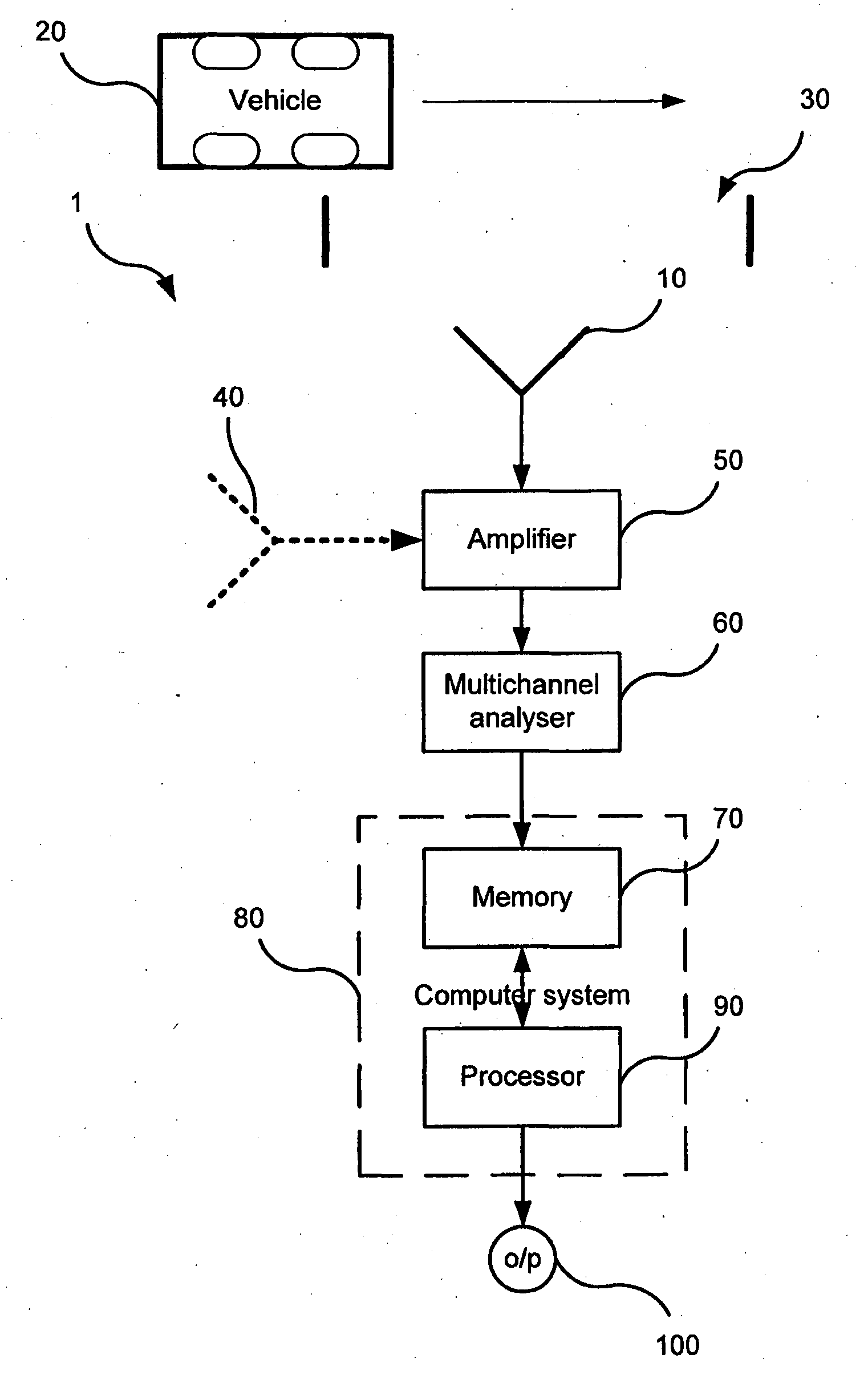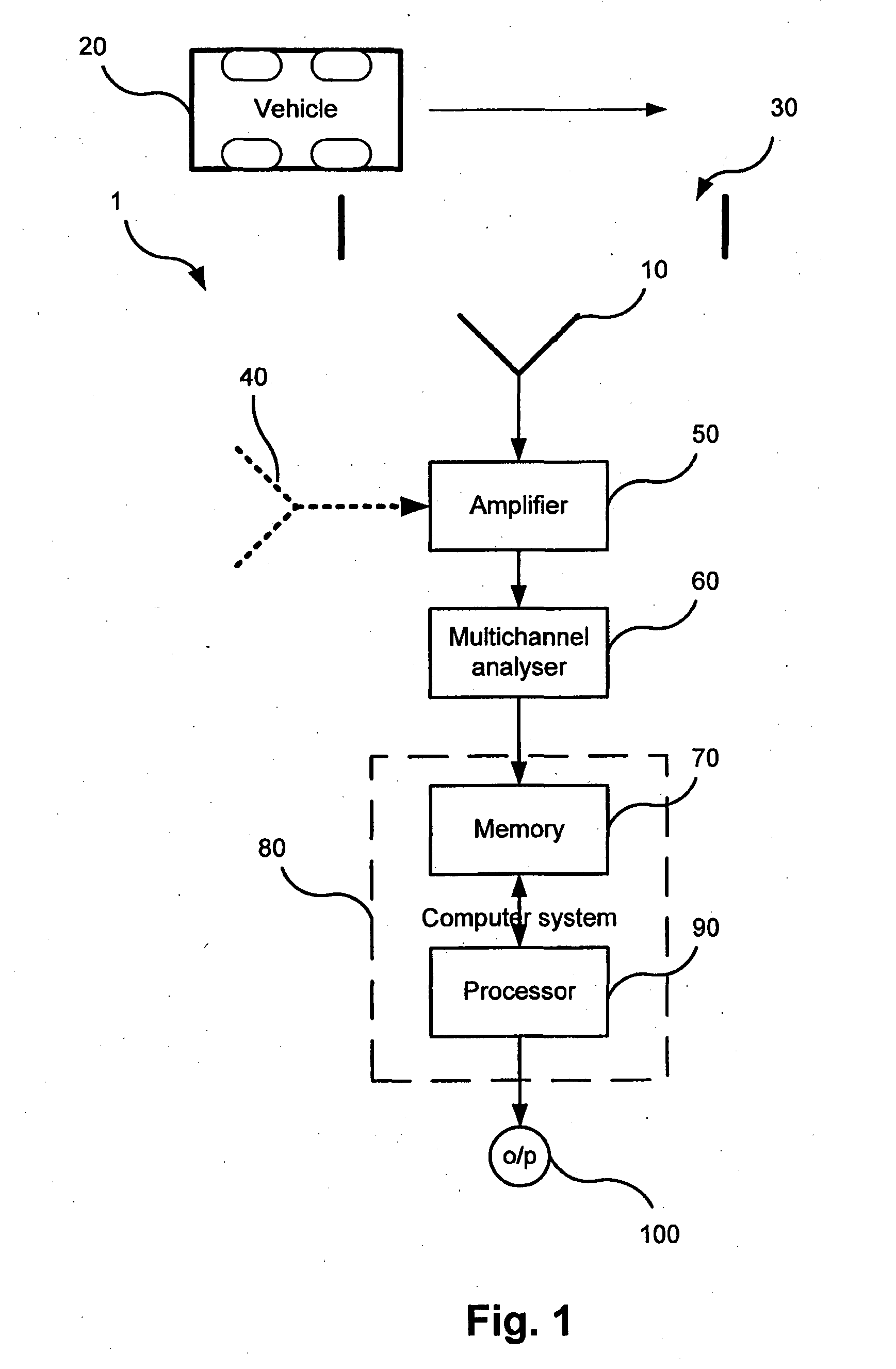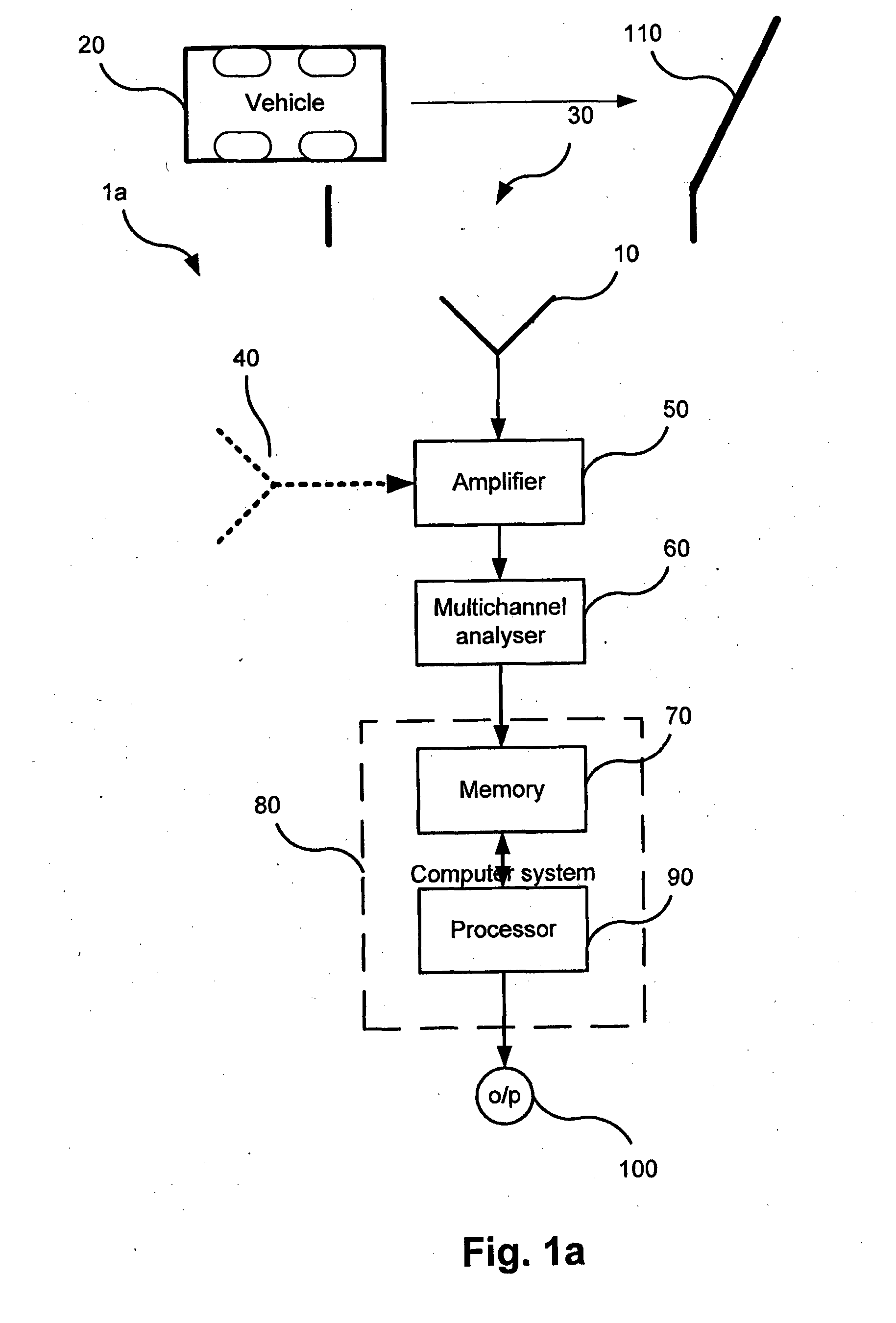Radionuclide detection and identification
a radionuclide and detection technology, applied in the field of detecting and identifying radioactive materials, can solve the problems of complex detection of prohibited radionuclides, high nuisance alarm rate of systems, and inability to distinguish legitimately traded goods containing elevated concentrations of norms from illicit or inadvertent goods containing prohibited radioactive materials
- Summary
- Abstract
- Description
- Claims
- Application Information
AI Technical Summary
Benefits of technology
Problems solved by technology
Method used
Image
Examples
Embodiment Construction
[0040]The present disclosure is related to an earlier PCT application, numbered PCT / AU2010 / 001509, made by the present applicant and entitled “Anomaly detection of radiological signatures”, the entire content of which is incorporated herein by reference.
[0041]The presently disclosed approach to radionuclide detection and identification is to acquire reference gamma ray spectra of radionuclide sources and to compare an acquired gamma ray spectrum of the target (the target spectrum) with the reference spectra. If the target spectrum is determined to belong to a first class containing the reference gamma ray spectra of a radionuclide source of interest, the target is deemed to contain the radionuclide source of interest. The disclosed approach uses Fisher Linear Discriminant Analysis (FLDA) to determine whether the target spectrum belongs to the first class containing the reference gamma ray spectra of the radionuclide source of interest. Further, it enables this determination to be ma...
PUM
| Property | Measurement | Unit |
|---|---|---|
| time | aaaaa | aaaaa |
| time | aaaaa | aaaaa |
| time | aaaaa | aaaaa |
Abstract
Description
Claims
Application Information
 Login to View More
Login to View More - R&D
- Intellectual Property
- Life Sciences
- Materials
- Tech Scout
- Unparalleled Data Quality
- Higher Quality Content
- 60% Fewer Hallucinations
Browse by: Latest US Patents, China's latest patents, Technical Efficacy Thesaurus, Application Domain, Technology Topic, Popular Technical Reports.
© 2025 PatSnap. All rights reserved.Legal|Privacy policy|Modern Slavery Act Transparency Statement|Sitemap|About US| Contact US: help@patsnap.com



